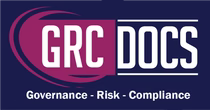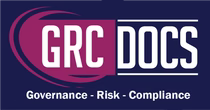SOC2 Vulnerability Management Policy Template Download
Introduction
Vulnerability management is a cornerstone of information security, ensuring that weaknesses in systems, networks, and applications are identified, assessed, and remediated before they can be exploited. The Vulnerability Management Policy provides a structured framework for safeguarding data assets, meeting regulatory obligations, and maintaining trust with stakeholders. It covers scanning, penetration testing, patch management, risk assessments, and security measures while aligning with Australian and New Zealand legislation.

Step-By-Step Guide For Using The Vulnerability Management Policy
Step 1: Define Scope and Applicability
-
-
Apply the policy to all staff, contractors, consultants, visitors, and third parties handling organizational systems or data.
-
Include information, records, applications, hardware, and remote services.
-
-
Why it matters: A clear scope ensures consistent enforcement of vulnerability management practices across the enterprise.
Step 2: Assign Roles and Responsibilities
-
-
Management: Provide oversight, allocate resources, and ensure compliance.
-
IT Department: Conduct scans, manage patching, and enforce protocols.
-
Employees: Follow secure practices, maintain confidentiality, and report vulnerabilities.
-
-
Why it matters: Clear accountability ensures efficient execution of vulnerability management.
Step 3: Maintain Asset and Inventory Management
-
-
Keep an up-to-date inventory of hardware, software, and systems.
-
Track assets through their lifecycle with vulnerability management procedures applied at every stage.
-
-
Why it matters: Accurate inventories ensure vulnerabilities are identified across all assets, not just critical ones.
Step 4: Conduct Regular Vulnerability Scanning
-
-
Perform scans biweekly or after major system changes.
-
Use corporate vulnerability scanners for all devices and link results to the SIEM for monitoring.
-
Compare scan results over time and prohibit tampering with outcomes.
-
-
Why it matters: Frequent scanning ensures vulnerabilities are detected early and consistently.
Step 5: Perform Penetration Testing
-
-
Conduct penetration tests quarterly or after major infrastructure updates.
-
Obtain management approval before testing.
-
Avoid disruptive techniques like DoS, DDoS, and brute force attacks.
-
Test both internal and external environments.
-
-
Why it matters: Penetration testing simulates real-world attacks, revealing weaknesses that automated scans may miss.
Step 6: Implement Remediation Measures
-
-
Act promptly to remediate identified vulnerabilities.
-
Prioritize high-risk vulnerabilities while addressing medium and low risks as early as possible.
-
Document remediation activities and perform risk assessments if remediation is not possible.
-
-
Why it matters: Timely remediation reduces the window of exposure to threats.
Step 7: Conduct Rescans and Retests
-
-
Verify remediation efforts with follow-up scans.
-
Ensure vulnerabilities are closed before marking them resolved.
-
-
Why it matters: Validation ensures remediation is effective and no weaknesses remain.
Step 8: Enforce Patch Management
-
-
Assign asset owners responsibility for patching.
-
Evaluate updates based on severity and risk.
-
Test patches before deployment, then roll out changes with change management approval.
-
Apply patches promptly, enable automated updates, and ensure compensating controls if patches are unavailable.
-
-
Why it matters: Patch management closes known vulnerabilities and prevents exploitation of outdated systems.

Step 9: Conduct Risk Assessments
-
-
Perform bi-annual risk assessments focused on vulnerabilities.
-
Assess risks associated with sensitive data, third-party systems, and remote services.
-
Develop tailored mitigation strategies.
-
-
Why it matters: Proactive risk assessments ensure the organization anticipates and mitigates threats before they escalate.
Step 10: Strengthen Security Measures
-
-
Deploy advanced firewalls, IDS/IPS systems, and conduct regular audits.
-
Apply both cybersecurity and physical security measures for sensitive systems.
-
Follow ACSC and NCSC guidance for national security alignment.
-
-
Why it matters: Multi-layered security strengthens organizational defense against evolving cyber threats.
Step 11: Enforce Access Controls
-
-
Apply the principle of least privilege for data and system access.
-
Maintain audit logs to track access to sensitive information.
-
Conduct periodic reviews and adjust permissions as necessary.
-
-
Why it matters: Proper access control prevents unauthorized access and ensures accountability.
Step 12: Ensure Compliance with Regulations
-
-
Align practices with the Australian Telecommunications (Interception and Access) Act and New Zealand Telecommunications (Interception Capability and Security) Act.
-
Meet data retention and lawful interception requirements.
-
Train employees on relevant legal obligations and compliance requirements.
-
-
Why it matters: Compliance reduces legal risks and strengthens trust with regulators and clients.
Step 13: Training, Awareness, and Policy Review
-
-
Provide regular training on vulnerability management, patching, and reporting.
-
Run awareness programs highlighting emerging threats and secure practices.
-
Review the policy annually or after regulatory or business changes.
-
Document and approve exceptions at senior management level.
-
-
Why it matters: Continuous improvement ensures the policy adapts to new risks and maintains effectiveness.
Conclusion
The Vulnerability Management Policy provides a robust framework for identifying, assessing, and remediating weaknesses before they are exploited. By following these thirteen steps covering scanning, penetration testing, remediation, patching, risk assessments, and compliance organizations can systematically reduce risk, strengthen defenses, and ensure regulatory alignment. Regular training and policy reviews keep the process dynamic and effective, while access controls and layered security enhance resilience.





